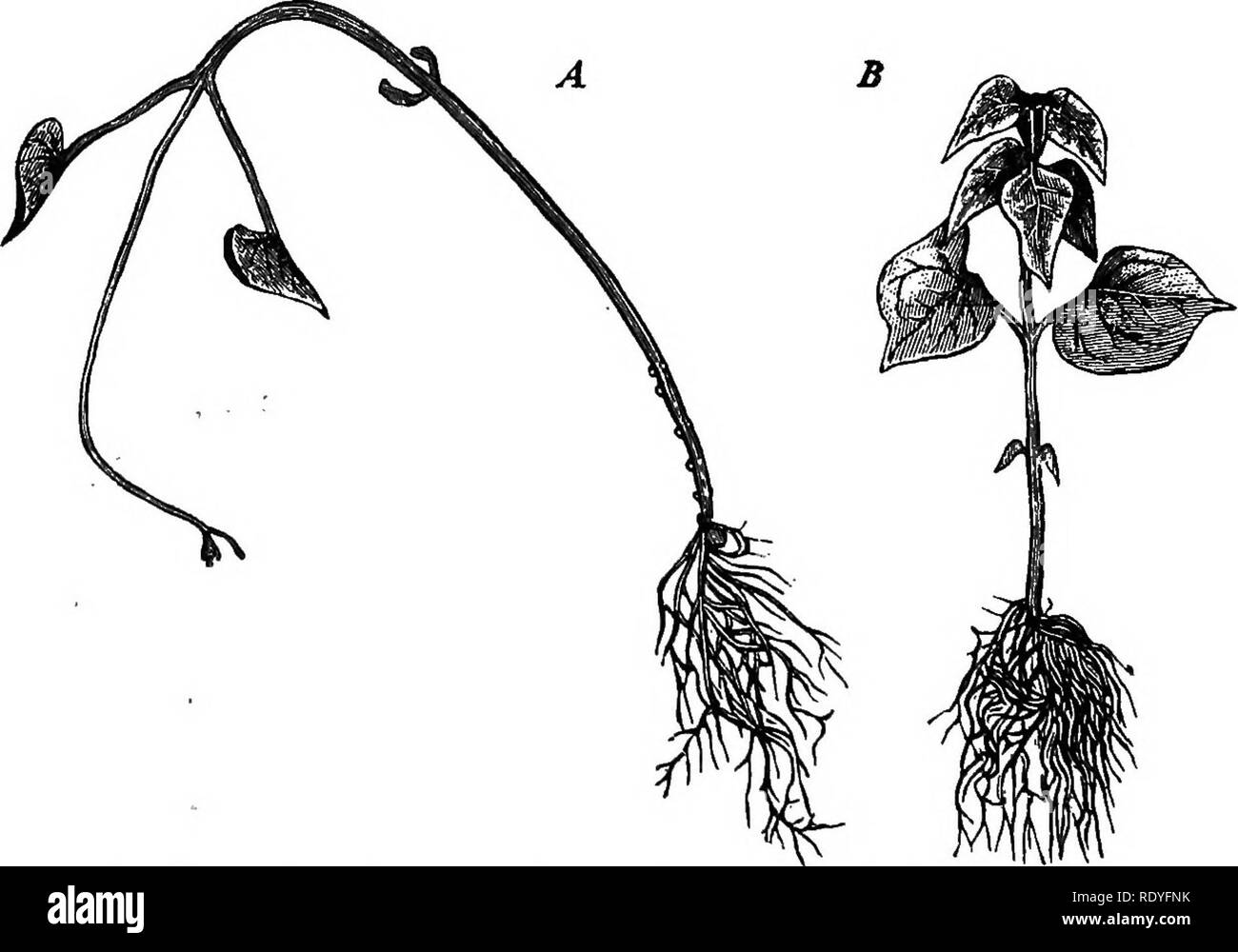. Plant physiology. Plant physiology. 2S2 PHYSIOLOGY or GROWTH AND CONFIGURATION shown in the etiolated and in the usual condition in Fig. 133.' Most etiolated stems fail to develop lateral branches, but the etiolated potato sprout is an exception to this rule. It has much-elongated internodes and rudimentary leaves, but it bears small lateral branches (Fig. 134)- Many plants that develop only very short stems in light, with leaves in rosettes, like Bellis perennis and Sempervivum (Fig. 123, page 239), form elongated stems in darkness, with spirally arranged leaves. Another group of plants tha

Image details
Contributor:
The Book Worm / Alamy Stock PhotoImage ID:
RDYFNKFile size:
7.2 MB (220.1 KB Compressed download)Releases:
Model - no | Property - noDo I need a release?Dimensions:
1890 x 1323 px | 32 x 22.4 cm | 12.6 x 8.8 inches | 150dpiMore information:
This image is a public domain image, which means either that copyright has expired in the image or the copyright holder has waived their copyright. Alamy charges you a fee for access to the high resolution copy of the image.
This image could have imperfections as it’s either historical or reportage.
. Plant physiology. Plant physiology. 2S2 PHYSIOLOGY or GROWTH AND CONFIGURATION shown in the etiolated and in the usual condition in Fig. 133.' Most etiolated stems fail to develop lateral branches, but the etiolated potato sprout is an exception to this rule. It has much-elongated internodes and rudimentary leaves, but it bears small lateral branches (Fig. 134)- Many plants that develop only very short stems in light, with leaves in rosettes, like Bellis perennis and Sempervivum (Fig. 123, page 239), form elongated stems in darkness, with spirally arranged leaves. Another group of plants that do not produce longer internodes in darkness than in light includes those in which, under normal conditions, the leaves are much retarded in their development and the young internodes quickly become greatly elongated. Such forms, among which belong the hop {Humulus lupulus). Fig. 133.-—Seedlings of scarlet-runner bean. A, grown in darkness; B, grown in light. and Polygonum dumetorum, when grown with the alternating hght and darkness of day and night, develop full-grown leaves only on the older internodes, which, have ceased to elongate. Thus, the younger, elongating portion of the plant appears very much as though it were etiolated, and no marked difference in the ' In such twining plants as the scarlet-runner bean the manner of growtli of the younger portion of the shoot changes as they become older and the long internodes and small leaves of etiolated plants are produced, even in the presence of light. Thus, it the plant shown in Fig. 133, B, continued to grow in light it would soon become terminated by a long, slender shoot such as is shown in A of this figure. This kind of etiolation, generally shown by the younger por- tions of the stems of twiners, occurs in light, but it is similar to the etiolation of other plants (or of the same plant in its early stages of development) that is brought about by absence of light. As the light-grown shoot becomes older its leaves fin